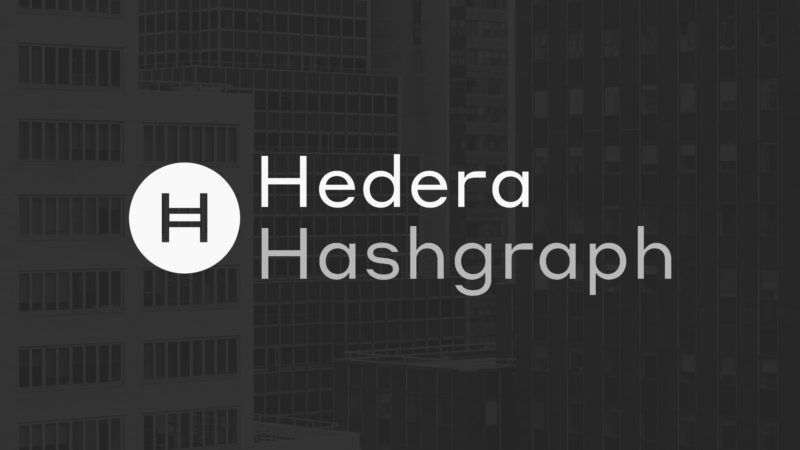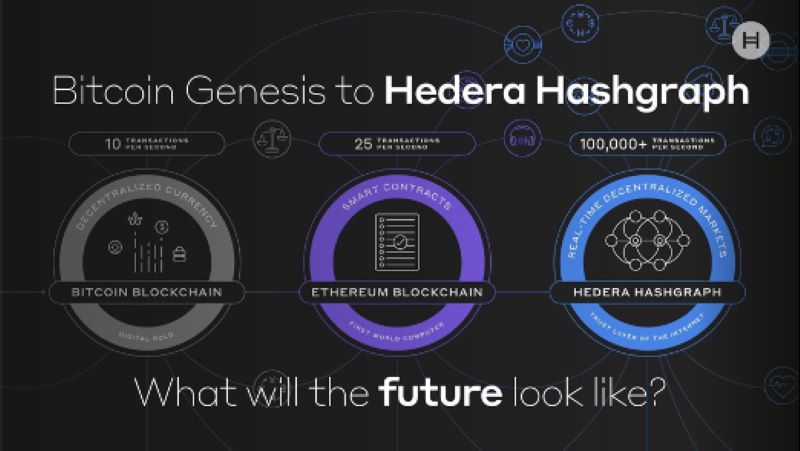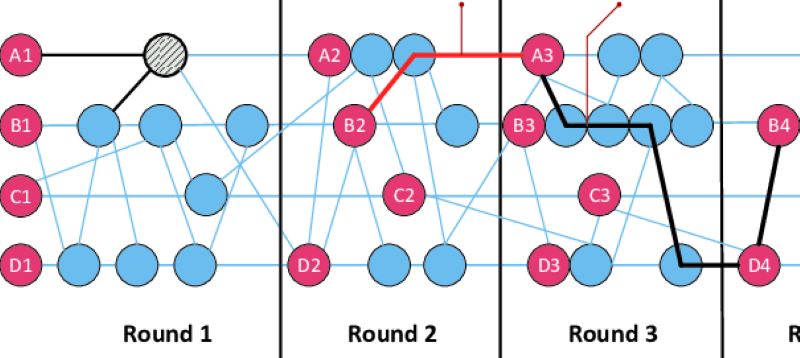Is Hashgraph Consensus the Future of Decentralized Technology?
You’ve heard of blockchain, but hashgraph consensus is the new player turning heads. It’s fast, fair, and might just be the upgrade decentralized tech needs. I’ll break it down for you. From gossip protocols to virtual voting magic, we’ll explore hashgraph like never before. Sit tight — we’re diving into a world where speed meets security and efficiency isn’t a trade-off. Is hashgraph your next tech crush? Let’s find out.
Understanding Hashgraph: The Basics and Beyond
Explaining the Gossip About Gossip Protocol
Let’s talk about how hashgraph shares info. Think of gossip about gossip as friends telling secrets. One person shares news, and like a game of phone tag, it spreads everywhere. In hashgraph, this game is a smart way to move data. Every time two computers chat in a hashgraph network, they tell each other what they know. This includes new info and the info they got before. It’s like a never-ending circle of ‘he said, she said.’
But why does this matter? In distributed ledger technology, we need a fast way to spread the word. We want everyone to have the same up-to-date book of transactions. Hashgraph’s method is like a super-speed gossip circle that works without a break. It means hashgraph can handle lots of data and still stay in sync.
Gossiping also helps with trust. Yes, you heard that right. Every computer keeps tabs on who gossiped to whom. This builds a history of how info moved. So, you can always look back and see how a piece of news reached you. If everyone agrees on the gossip, we can trust the info is right.
Now, imagine all this gossip helps make big group decisions. That’s where virtual voting comes in. But let’s dig into that next.
The Role of Virtual Voting in Hashgraph
In hashgraph, voting is key to make group choices without heavy lifting. It’s virtual because it’s like asking each computer’s opinion without sending extra messages. Due to gossiping, each computer has enough info to guess how the rest would vote. It’s like if you knew your friends so well, you could say their thoughts in a meeting without them being there.
Virtual voting makes sure everyone agrees on the order of events. Why do we care about order? In cryptocurrency, it matters who paid first. Think of cutting in line; no one likes that. So, hashgraph uses math to make sure everyone plays fair.
For example, with hbar crypto, we want to know who paid first to avoid spending the same coin twice. Virtual voting checks everyone’s ledgers to be certain about the order of these transactions. This way, hashgraph can run without confusion, keeping every coin’s story straight.
Now, you might wonder how this all adds up against blockchain. Trust me, it’s quite a match-up. Hashgraph has this cool way of making decisions that’s different from blockchain. While blockchains pile up blocks of data, hashgraph weaves them together. That can mean hashgraph gets stuff done faster and in a cleverer way.
So, how does this tie into the real world? Well, Hedera Hashgraph is a place where this all happens. They use the gossip and voting we talked about to keep their digital ledger running smooth. What’s better, they can do it with less energy than old-school blockchain. This is a step in the right direction for our planet.
And just because hashgraph is efficient doesn’t mean it’s easy to trick. Thanks to byzantine fault tolerance, even if some computers are up to no good, the network stays true. It’s like having a group project where even if a few are slacking, you still get an A.
To sum it up, hashgraph’s way of sharing data is clever and sturdy. It makes room for more transactions, and faster consensus without breaking a sweat. As we look at all the things we can do with distributed ledgers, hashgraph is a star player worth watching. We’re only scratching the surface of what we can build with this tech. So keep your eyes peeled — the future looks bright with hashgraph.
Hashgraph vs Blockchain: Evaluating the Differences
Assessing Transaction Speed and Efficiency
Let’s dive into what sets hashgraph apart from blockchain in terms of speed and how well it works. Unlike blockchain, which adds transactions in blocks, hashgraph shares data with a method called Gossip about Gossip. Think of it like friends quickly spreading rumors. This gossip method tells others about not only the main news but also how it heard the story. This way, information spreads super fast across the whole network.
With Hedera Hashgraph, the platform using hashgraph tech, this means we can see transactions confirmed in seconds. That is lightning fast compared to some blockchains! For instance, Bitcoin might take minutes or even hours for the same job. Faster transactions change the game for things like buying with crypto or sending money to friends.
Also, hashgraph uses less power which helps our planet. It does not need as much electricity as mining for Bitcoins, which eats up a lot of power. So, hashgraph is not just fast but also a friend to the Earth.
Analyzing Security and Byzantine Fault Tolerance
Now let’s talk about keeping things safe and secure. Security is a big deal when dealing with money or private info. In comes Byzantine Fault Tolerance, a fancy term for a trusted way to stop failures in the system. It makes sure a network can handle mischief, like broken or lying bits, without the whole thing crashing down.
Hashgraph scores big here because it’s super secure. It uses math magic, known as the virtual voting algorithm, so even if some parts are acting up, the network still agrees on what’s true. That’s like if a few kids in class tried telling a false story, but the rest of the class knew the real story and stuck to it. This trust means a lot for safety in things like online voting or health records.
With hashgraph’s virtual voting, every node or user in the network has a say. They all help decide the truth of transaction history. This makes putting false info into the system really, really hard. Imagine trying to fool an entire city at once – not so easy, right?
Comparing hashgraph to blockchain, hashgraph does a better job of making sure no single player can cause trouble. It’s kind of like having an entire squad always ready to fact-check everything, making sure what’s true stays true.
Plus, Hedera’s hashgraph network is public. This means anyone can join and play a part. Still, even with this open door, the system stays tough against attacks.
So, the big question, what is better? Hashgraph or blockchain? It’s all about what you need. For super quick, clean, and sturdy systems, hashgraph shines. It’s like picking a sports car over a tractor for a race. As for blockchain, it’s still a solid choice for many, like a trusty tractor is for farming. It’s not one size fits all but knowing the perks of each can help pick the right tool for the job.
Hashgraph in Action: Use Cases and Implementation
Public vs Private Hashgraph Networks
Public hashgraph networks like Hedera Hashgraph let anyone join. They are open and transparent. This makes them great for apps that need trust from many users. For example, people use them for games, payments, and to track stuff like medicine.
Private hashgraph networks are different. They are only for a few users, often within one company. This keeps data safe and allows for quick changes if needed. Banks and healthcare use private networks to protect information.
Both types use hashgraph technology, which is faster and more secure than old blockchain ways.
Advancing Applications with Hashgraph SDK
Developers use the hashgraph Software Development Kit (SDK) to build new apps. This toolkit helps them put hashgraph features in their apps. It lets them use things like fast transactions and solid security that hashgraph offers.
With the SDK, you can create anything from a simple game to a big finance system. It’s like getting a box of super tools for building in the digital world.
So, Hashgraph technology lets us do things faster and with trust on the internet. It could really change how we do all sorts of things online, from buying stuff to playing games. With hashgraph, the future looks bright and fast!
The Future of Decentralized Consensus: Hashgraph’s Potential
Examining Hashgraph’s Scalability and Energy Consumption
When we talk about how well something can grow, hashgraph technology stands out. It uses less computer power than other systems do. This keeps costs down and saves energy. Hashgraph can handle more transactions at once when compared to blockchain. How is this possible? Hashgraph uses a method called Gossip about Gossip protocol. It quickly spreads information across the network. It’s like a game of telephone but way smarter!
Each member tells two others a bit of news. Soon, everyone knows! This makes hashgraph really fast. And guess what? It needs less energy too. Traditional blockchains can be like heavy trucks hauling loads. Hashgraph is like a swift bike zipping past them. It’s great for our planet as it doesn’t use much power. This could mean a ton for places where energy is precious.
Exploring Hashgraph’s Governance and Fair Ordering Guarantee
Now, let’s peek into how hashgraph decides on things. The system has rules to keep it running smooth and true. It uses something called virtual voting algorithm. No real votes though! It mathematically figures out what most people agree on. This way, choices made are fair, and everyone’s voice counts, even if they are not online at the moment.
This is key for programs that handle money, like Hedera Hashgraph. But what’s so great about this voting stuff? It’s super fast, making hbar crypto actions speedy. Quick consensus means you can send and get hbar super fast.
Hashgraph gives you something special – fair ordering guarantee. This is a big deal. It means that all transactions are written down in the order they happen. They don’t get shuffled or lost. You can trust that what you see is what really went down. It’s like being first in line and knowing you’ll stay there.
So, is hashgraph the future? It sure has the chops for it. It can grow big, doesn’t ask much from our planet, and keeps things fair and in order. This might be what we’ve been waiting for. As for energy and decisions, hashgraph seems to have smart answers for both. It might just be the new champ of decentralized tech.
We’ve dug deep into Hashgraph, a tech that could change how we keep data safe and work together online. From the quick gossip protocol to smart voting, we learned it’s fast and secure. We saw how it differs from blockchain, with speed and trust as big wins.
Hashgraph shows promise in how we share info, either in open or closed networks. It’s also a tool for devs to build cool new apps. Looking ahead, we think about how it might grow. Can it handle lots more users? Will it use less power? It aims for everyone to have a say and keep things in order—which is fair and smart.
I believe this tech holds a shiny future. It’s not just another blockchain; it’s a leap ahead. The more we use it, the better we get at sharing and protecting our digital world. So let’s keep our eyes on Hashgraph. It could be the key to a smooth, safe online life for us all.
Q&A :
What is Hashgraph Consensus and how does it work?
Hashgraph consensus is a novel distributed ledger technology that offers an alternative to blockchain. It employs a gossip protocol and virtual voting to achieve consensus quickly and efficiently among its nodes. Participants spread information on transactions and the state of the network by repeatedly communicating with random peers, which builds a graph of connections. This data then allows the network to determine the order of transactions with high confidence, without the need for proof of work or proof of stake.
How is Hashgraph Consensus different from Blockchain?
The key difference between Hashgraph consensus and traditional blockchain is in the way they achieve distributed consensus. Blockchain relies on sequential blocks to record transactions, which often requires competitive mining and can lead to forks. In contrast, Hashgraph creates a directed acyclic graph of transactions, allowing for simultaneous processing and achieving consensus faster. This approach eliminates the need for mining and reduces the possibility of forks.
What are the benefits of using Hashgraph Consensus?
Using Hashgraph consensus offers several benefits over traditional blockchain, such as higher throughput due to its fast consensus algorithm, which can handle hundreds of thousands of transactions per second. It also provides fairness because the consensus time-stamping does not give preferential treatment to any participant. Moreover, its security is touted as enhanced due to its asynchronous Byzantine Fault Tolerance (aBFT), making it resilient against attacks.
Is Hashgraph Consensus more secure than blockchain?
While both hashgraph and blockchain strive to be secure distributed systems, Hashgraph claims to offer superior security with its aBFT property—meaning it guarantees consensus without being susceptible to a single point of failure or controlled by a small group of nodes. In theory, this makes hashgraph more resilient against distributed denial-of-service (DDoS) attacks and other malicious exploits compared to certain blockchain implementations.
Can Hashgraph Consensus be applied to existing blockchain applications?
Hashgraph consensus is a distinct technology from blockchain, but there’s potential for its underlying principles to be integrated into existing blockchain applications for improved efficiency and security. However, this requires significant adjustments to the application’s infrastructure, as the fundamental consensus mechanisms differ greatly between hashgraph and blockchain systems. Developers would need to evaluate the compatibility and potential benefits of such an integration on a case-by-case basis.




RELATED POSTS
Detailed steps to participate in the BSX Airdrop quickly
Are you ready to dive...
Top 3 Secrets behind Bitcoin Peak that you must know
The rise and fall of...
Do you know the value of 881 AVA tokens in USD?
“881 AVA Tokens in USD”...
Methods to Prevent Blockchain Attacks: Safeguard Your Digital Fort Knox
Prevent blockchain attacks with fortified...
LazyOtter Airdrop – Increase Your Chances of Owning Tokens with DeFi Vaults
LazyOtter Airdrop brings a safe...
Tomarket Airdrop – Explosion of the Super Countdown Event
The Tomarket Airdrop event is...
Mechanics Of Blockchain Technology: How It’s Transforming Tech
Learn the Mechanics of Blockchain...
What is Karak? Guide to joining Restaking
In the dynamic cryptocurrency market...
GameFi Revolution: How Blockchain Merges with DeFi for Gaming Gold
GameFi blends Blockchain and DeFi...
Decentralized Content Sharing: Revolutionizing Educational Access and Collaboration
Decentralized content creation and sharing...
First Use Cases of Blockchain: Pioneering a Digital Revolution
Discover the genesis and early...
Blockchain in Education: Unlocking the Potential Benefits for Student Data Management
"Enhance data security & streamline...
How Blockchain will be used in the future: Help to transform industries
How will blockchain revolutionize industries...
What is a honeypot in Crypto? Unveiling the Deceptive Traps!
What Is a Honeypot in...
Proof of Elapsed Time in Crypto: Unveiling the Mystery Behind Secure Consensus
Discover the advantages of PoET...
How Blockchain Security Audits Safeguard Your Digital Assets
How Blockchain Security Audits Work:...